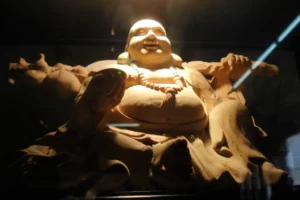While the rest of the country is famous for its high-speed trains and vibrant cities, the Yaeyama Islands move at the rhythm of waves and birdsong. This area will amaze you with its breathtaking natural beauty, blending majestic simplicity with the ancient cultural heritage. Keep reading to learn more about this Okinawan treasure!
Table of Contents
ToggleWhere are the Yaeyama Islands?
The Yaeyama Islands are a group of beautiful tropical islands in the very south of Japan. They are part of Okinawa Prefecture and far from Japan’s main islands. Ishigaki is the biggest and most important island in the Yaeyama group. It’s home to many Ryukyu people and is the main gateway for travelers visiting the other islands.
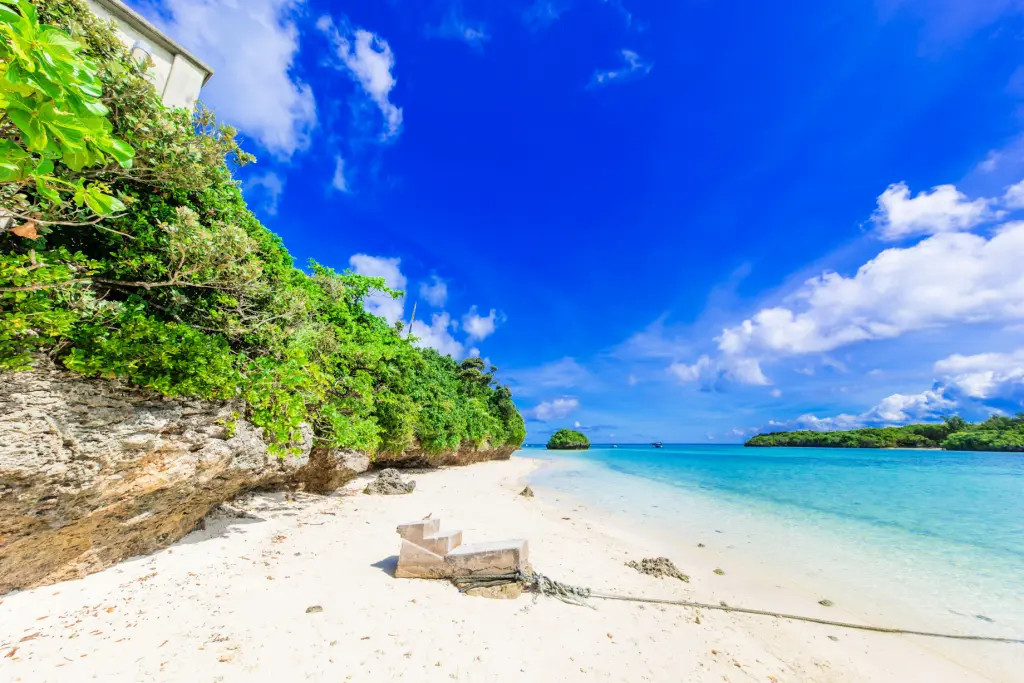
Other lovely islands include Iriomote, Yonaguni, Hateruma, Taketomi, and Kohama. The name Yaeyama means “many layers of mountains”. It comes from local words spoken long ago. These islands have a warm tropical climate, green mountains, thick forests, and clear coral beaches.
What is special about the nature of Yaeyama?
The Yaeyama Islands are full of amazing nature! Thick forests and mangroves cover them. These forests are filled with many unique plants and animals. You can also see fields of sugarcane and pineapple growing in the sunshine!
Many rare animals live here, such as dolphins, sea turtles, and manta rays, swimming around the coral reefs. The sea is also home to big fish and gentle whale sharks. A long time ago, dugongs and whales were common too. Today, people still remember and respect these animals with sacred spots, including the one on Aragusuku Island.

Moreover, bird lovers would be happy in Yaeyama! The islands are significant for birds, and many kinds live or stop here during their travels. You might spot black wood pigeons, green pigeons, and even pretty seabirds like terns flying over the ocean. These birds help show how rich and full of life Okinawan nature is.
One of the rarest plants in the world, the Yaeyama palm, grows only on the Ishigaki and Iriomote Islands. Plus, deep in the jungle of Iriomote, a very shy and endangered wild cat called the Iriomote cat lives. Only around a hundred of them are left! Because the Okinawan nature there is so special and precious, Iriomote was chosen as a Natural World Heritage Site in 2021.
Are you looking for great snacks from places as far as Okinawa? Check out Sakuraco! Sakuraco delivers traditional Japanese snacks, teas, and sweets from local Japanese makers directly to your door so you can enjoy the latest treats directly from Japan!
What Okinawan attractions can I explore in the Yaeyama Islands?
Kabira Bay
Kabira Bay is a spectacular location on the north coast of Ishigaki Island. Known for its crystal-clear turquoise waters, white sandy beaches, and lush greenery, it is one of Ishigaki’s most scenic places. The bay also hosts Japan’s only black pearl farms, where these rare pearls are meticulously cultivated.
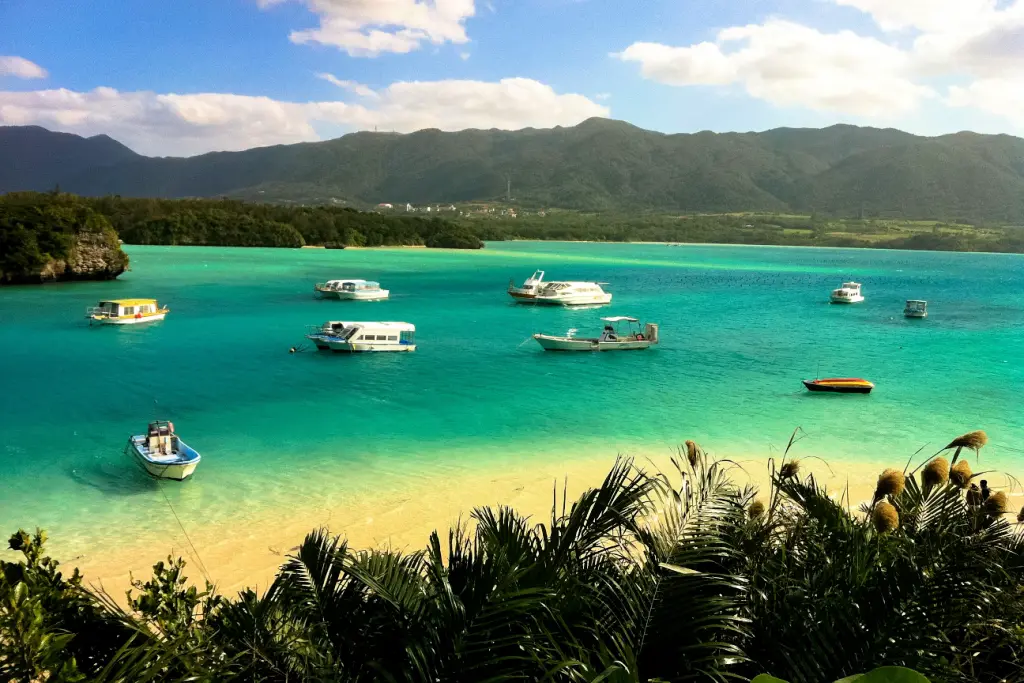
The bay is cherished for its exclusive “Kabira Blue” sea, which changes colors depending on the time of day and the weather. Though swimming and diving are prohibited, you can enjoy a glass-bottom boat ride and view the underwater world.
Kabira Ishizaki Manta Scramble
The Kabira Ishizaki Manta Scramble, situated near the coast of Kabira Bay, is a fantastic spot to see manta rays up close! This area is famous for being one of the best places in the world to encounter these giant, graceful creatures. The mantas visit this spot to feed on plankton, especially during the summer and early autumn, when you can see up to ten mantas at a time. Diving or snorkeling here is a thrilling adventure. The waters are usually calm and clear, allowing you to see the mantas glide above you.
Iriomote-Ishigaki National Park

This is the southernmost national park in the country and is the location of Japan’s only tropical rainforest. The park has a variety of attractions, from the largest mangrove forest in Japan to stunning coral reefs full of marine life. Visitors can explore this lush paradise through hiking, kayaking, and scuba diving. In addition to its natural wonders, the park is perfect for stargazing. Iriomote-Ishigaki National Park is known for its dark skies, where visitors can see planets, constellations, and even the Milky Way.
Mayagusuku Waterfall
Mayagusuku Waterfall is a stunning hidden gem deep in the forest of Iriomote Island. It sits high in the mountains where the Urauchi River meets the Itajiki River. The waterfall gently flows down tall, stair-like rocks for about 25 meters (82 feet), creating a peaceful and magical scene. Its name means “cat castle”, because people think the Iriomote cats might live nearby.
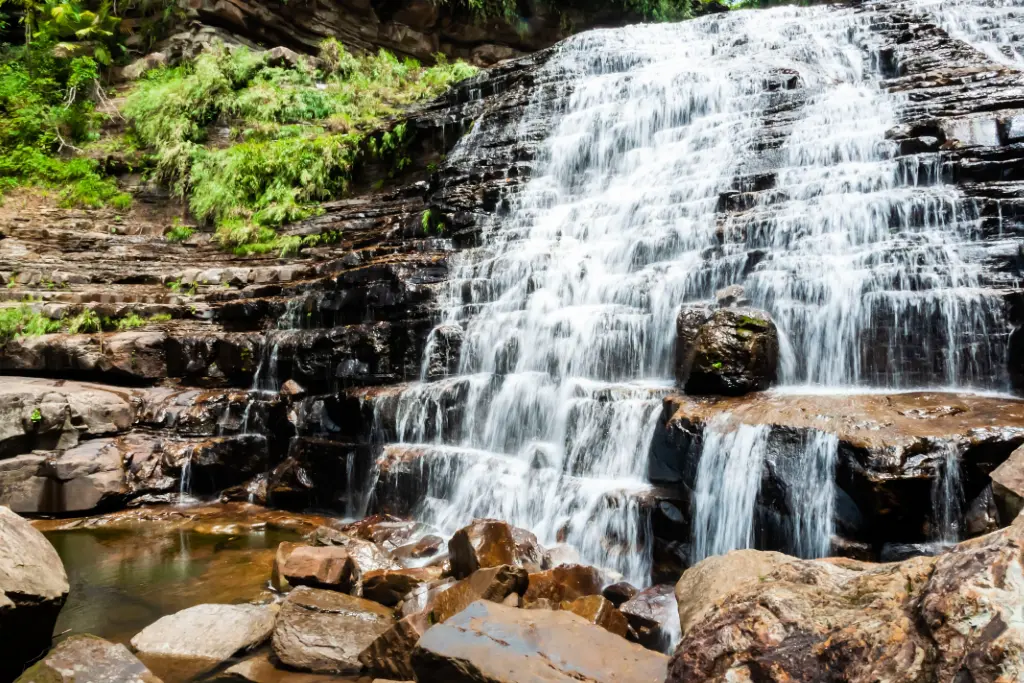
To see this impressive waterfall, you’ll need to take a big hike, around two hours, through the jungle. It’s ideal for adventurers who love nature and don’t mind a little challenge. You can walk through shallow rivers, climb rocky paths, and enjoy the jungle.
Ishigaki Yaima Village
Ishigaki Yaima Village is a friendly place on a green hill in Ishigaki Island. Here, you can see historic houses with red-tiled roofs over 100 years old. In addition, there are shows with happy Okinawan music and dancing inside the houses. You might hear the sanshin, a special three-stringed instrument.
Don’t forget to try painting little shisa (Lion-like creatures from Okinawan folklore) statues, dressing up in colorful Ryukyuan clothes, and eating delicious local food like yaima soba. It’s a fun way to learn about Okinawa’s old-time life.
Why should I visit these Okinawan islands?
The Yaeyama Islands invite you to experience a different side of Japan, a place that is quiet, deeply natural, and connected to timeless traditions. These islands are a living example of Okinawan respect for nature and life. This balance between human culture and the environment is refreshing and meaningful.
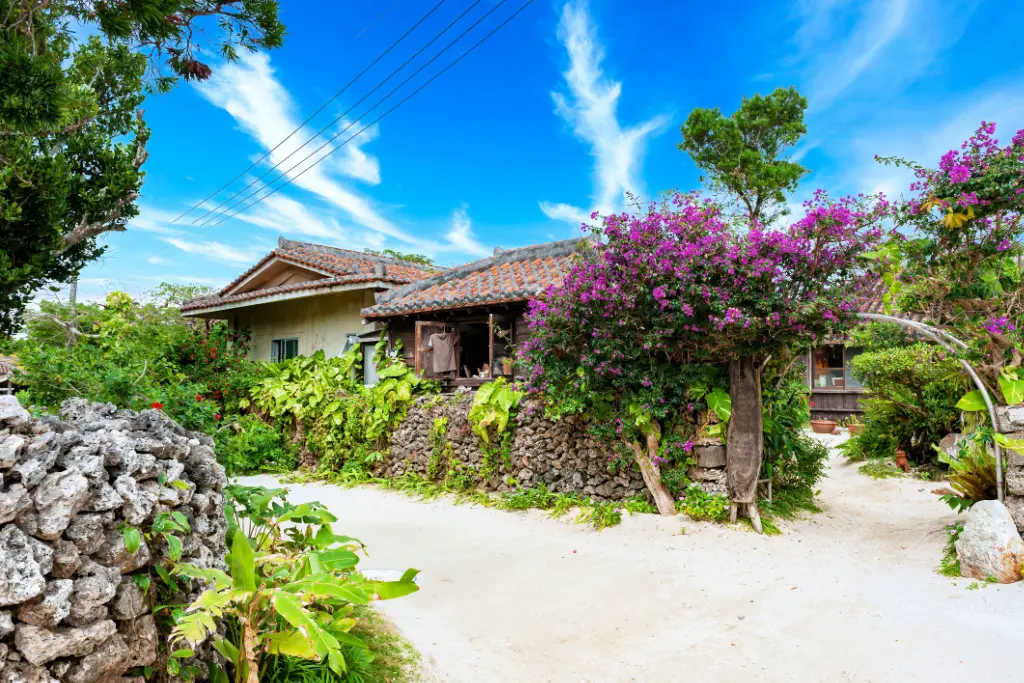
When visiting, you don’t just take photos; you help support the islanders’ efforts to protect their wildlife and way of life. Mindfully exploring, listening to local stories, and learning about the delicate ecosystems, you become part of a broader picture that values experience and care. What part of this tranquil island life would you like to experience most? Share your thoughts in the comments!




